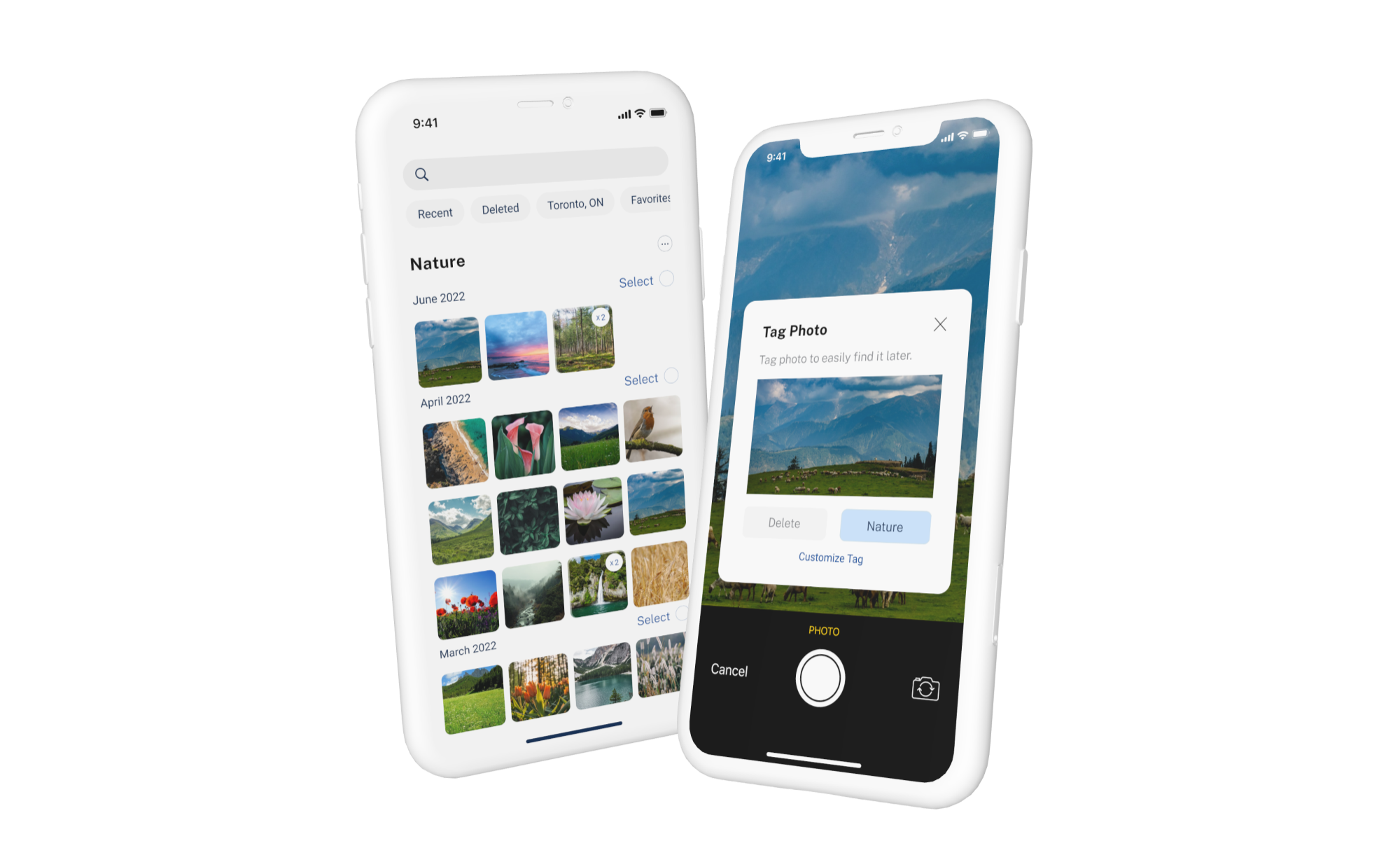Sorted - Mobile
Designing a better photo keeping experience


Despite keeping vast amounts of digital media (photos and videos), we tend to avoid organizational practices to sort our media. This negatively impacts how we retrieve and interact with our media.
Looking into the personal information management space was the starting point of our research. Across the team, we sourced and analyzed roughly 26 secondary resources on on personal information management including subtopics like data privacy, photo management, and environmental impact. As personal information management is a rather vast space, we quickly narrowed the focus: personal digital media management.
"Personal information management: From information consumption to curation" by Steve Whittaker was a key resource on on our personal digital media management resource:
Information Overload
"people tend to keep too much information with the exception of contacts and web pages."
- Steve Whittaker, Researcher
Retrieval Challenges
"premature filing of low value information lead people to generate complex collections of information that are of little utility"
- Steve Whittaker, Researcher
After having a clear idea of the direction of the our research from our secondary research stage, moved towards primary research. We conducted a total of 20 semi-structured interviews over 2 rounds, I personally conducted 4 of these interviews. We sought demographic information as well as information on our interviewees' digital media sorting habits.
Example interview questions:
1. Would you identify as someone who is organized with their digital media?
2. Is your current method of media management working for you? (why/why not?)
Below are some stats from the primary research:
Diary studies provided a self-reported record of our participant’s attitudes and behaviors. This was an essential part in showing the the real actions of the user over their reported actions. As a team, we conducted a total of 8 diary studies over 7 days. Each day, we asked our users to answer task oriented questions around their capturing, retrieval and deletion process.
Sorting ideas into an affinity diagram was helped show a high-level grouping of recurring themes. A total of 24 groupings were identified. Below is an example of one of the groupings below:
Self-reported level of difficulty in retrieving digital media.
We noted a correlation between the time passed since the photo was captured and the difficulty of retrieval.
Digital Media Deletion Practices
Users showed a range of reasons for photo deletion. The top reported reasons were that the media was "irrelevant/no longer necessary" 9/20 entries and "Unsatisfied with the photo" 6/20 entries.
Our diary studies showed that users frequently captured a mix of photos and videos ranging in importance. Users had sentimental digital media together with less important media like screenshots and GIFs.
Reviewing existing solutions to digital media storage problems gave us new perspectives on how to solve our problems and also helped us validate our insights. Slidebox is an app that allows users to organize photos and albums. Manage all media files. Overall impressions of the app are positive as per it's 4.3 star rating (at time of project) on the app store.
However, coming from a usability perspectives, I noticed some areas that could be improved on.
Users were only able to manage their digital through their library. If the goal is to encourage better media management, users should be supported at different stages of their journeys.
When you close the app, it does not queue past photos you’ve already swiped through (i.e. have to scroll/swipe to find the last photo you were sorting)
Users have to swipe each photo individually. In some cases, users know that there are several photos you wish to delete. Having to swipe through them individually is not the most efficient.
Based on our research we created 5 design guidelines to inform the design of our solution:
Design for a way to automate the digital media organization process.
Design for a way to assign photo relevancy using prompts to assist with deletion.
Design for searchability by contents of media (tag/sort media by contents).
Design for a way to group and visually highlight duplicates.
Design to allow deletion of media based on the media type, relevancy, and file size.
As the majority of our users reported using their smartphones to manage their digital media and owned iPhones, I decided to design for iOS.
As the goal was to support users to manage their media throughout different stages in their journey, I designed both in-app and out-of-app features.
Out-of-app scenarios:
In-app scenarios:
As an supplementary part of the project, I took initiative to created a clickable prototype in Figma. This involved incorporating micro interactions and animations.